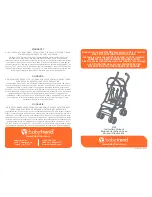
5-248
F35 MULTIPLE FEEDER PROTECTION SYSTEM – INSTRUCTION MANUAL
GROUPED ELEMENTS
CHAPTER 5: SETTINGS
5
The negative-sequence time overcurrent element can be used to determine and clear unbalance in the system. The input
for calculating negative-sequence current is the fundamental phasor value.
Two methods of resetting operation are available; “Timed” and “Instantaneous” (see the Inverse TOC Curve Characteristics
section earlier for details on curve setup, trip times and reset operation). When the element is blocked, the time
accumulator resets according to the reset characteristic. For example, if the element reset characteristic is set to
“Instantaneous” and the element is blocked, the time accumulator clears immediately.
Figure 5-132: Negative sequence TOC1 logic
5.7.7.3 Negative sequence instantaneous overcurrent (ANSI 50Q, IEC PIOC)
SETTINGS
GROUPED ELEMENTS
SETTING GROUP 1(6)
NEGATIVE SEQUENCE CURRENT
NEG SEQ OC1
NEG SEQ TOC1
RESET: Instantaneous
Range: Instantaneous, Timed
NEG SEQ TOC1 BLOCK:
Off
Range: FlexLogic operand
NEG SEQ TOC1
TARGET: Self-reset
Range: Self-reset, Latched, Disabled
NEG SEQ TOC1
EVENTS: Disabled
Range: Disabled, Enabled
NEG SEQ IOC1
NEG SEQ IOC1
FUNCTION: Disabled
Range: Disabled, Enabled
NEG SEQ IOC1 SIGNAL
SOURCE: SRC 1
Range: SRC 1, SRC 2, SRC 3, SRC 4, SRC 5, SRC 6
NEG SEQ IOC1
PICKUP: 1.000 pu
Range: 0.020 to 30.000 pu in steps of 0.001
NEG SEQ IOC1 PICKUP
DELAY: 0.00 s
Range: 0.00 to 600.00 s in steps of 0.01
NEG SEQ IOC1 RESET
DELAY: 0.00 s
Range: 0.00 to 600.00 s in steps of 0.01
NEG SEQ IOC1 BLOCK:
Off
Range: FlexLogic operand
NEG SEQ IOC1
TARGET: Self-reset
Range: Self-reset, Latched, Disabled
















































